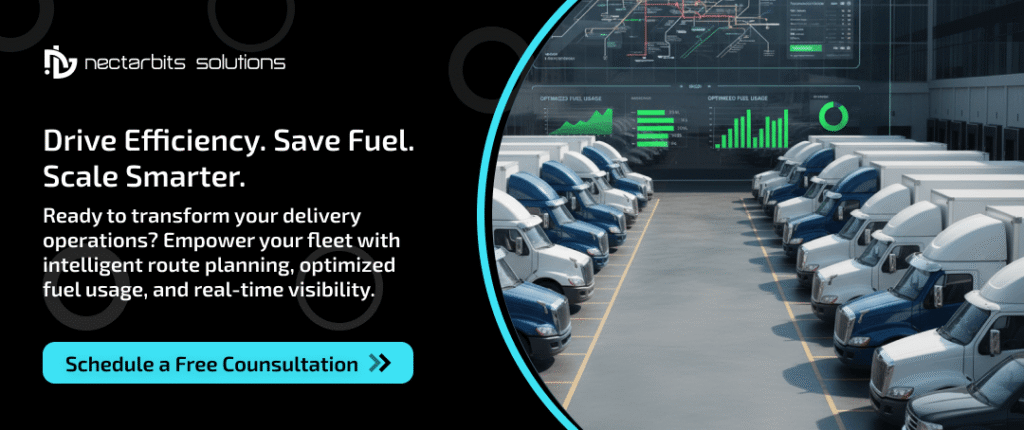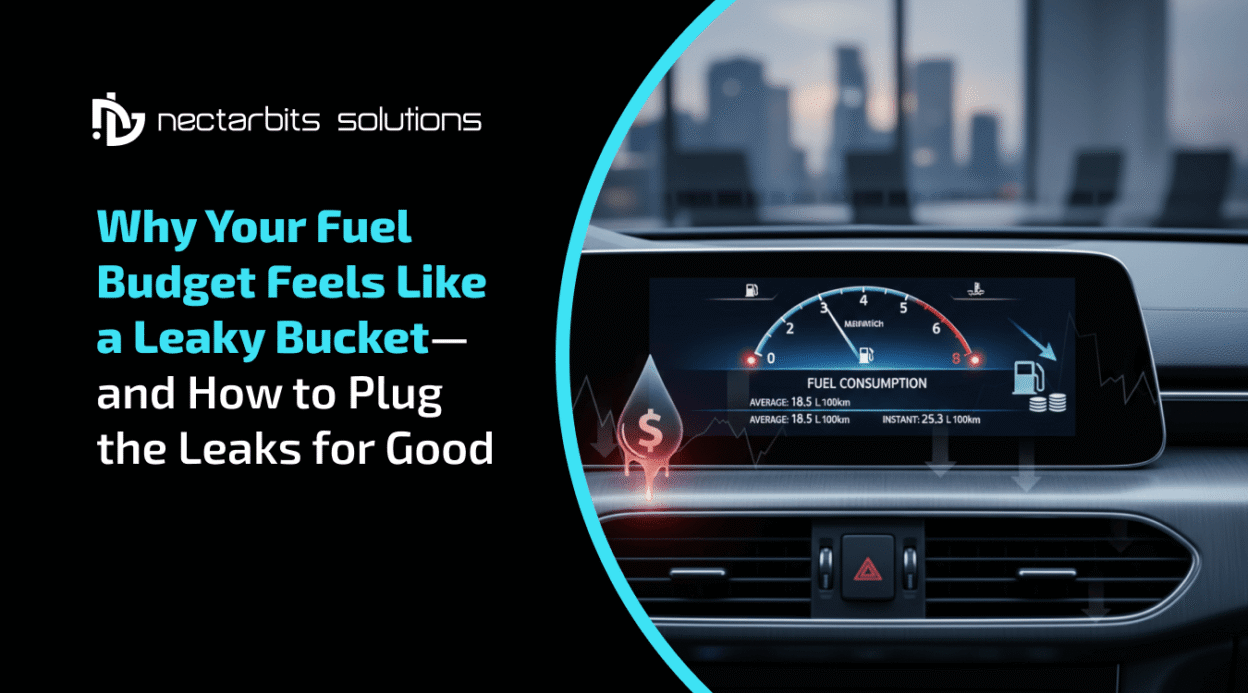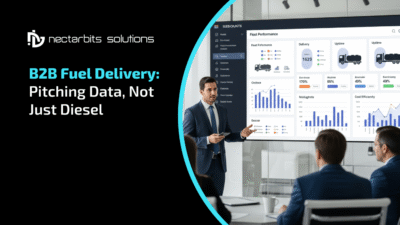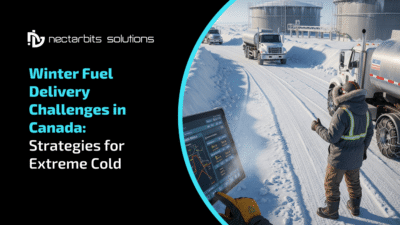You’ve been there. You fill up the entire fleet’s tanks at the start of the week, feeling confident about the budget. But by Thursday, you’re getting frantic calls from drivers needing to refuel—again. That sinking feeling hits you. It feels less like managing a budget and more like trying to fill a bucket riddled with holes.
For any business with vehicles on the road, fuel is a top operational cost, and it’s merciless. The truth is, it’s not just about the price at the pump you can’t control. It’s the silent, hidden leaks in your daily operations that are quietly draining your profits. But what if you could find those leaks and plug them, turning a volatile expense into a predictable, manageable cost?
Let’s break down why your fuel budget is disappearing so fast and explore the smart, technology-driven ways to take back control in 2025 and beyond.
The Obvious Gusher: Fluctuating Fuel Prices
Let’s get this one out of the way. Yes, fuel prices are volatile. Global events, supply chain issues, and economic shifts can make prices swing wildly. The U.S. Energy Information Administration (EIA) projects that while gasoline prices might average around $3.20 per gallon in 2025, the market remains unpredictable. While you can’t control the price of crude oil, you can absolutely control how much of it your fleet consumes. And that’s where the real power lies.
The Five Hidden Leaks Draining Your Fuel Budget
Beyond the pump price, several invisible factors are costing you a fortune. These small drips, multiplied across an entire fleet, quickly turn into a flood of wasted money.
Hidden Leak 1: Aggressive Driving Habits
Imagine one of your drivers, “Leadfoot Larry,” who speeds between stops, accelerates hard from every light, and brakes abruptly. It might feel faster, but this aggressive driving style can slash fuel economy by a staggering 15-40%.Now, multiply that by every driver, every single day.
- Speeding: Every mile per hour over 55 can cost you in fuel economy—up to a 1.0 mpg penalty for cruising at 60 mph instead of 55.
- Harsh Braking & Acceleration: This “pedal to the metal” approach wastes the momentum your vehicle has already built, forcing the engine to work harder and guzzle more fuel to get back up to speed.
- Excessive Idling: An idling vehicle goes nowhere but still burns fuel—up to a gallon per hour for some vehicles. It’s like paying an employee to stand still.
The Fix: You can’t ride shotgun with every driver, but technology can. Modern telematics and fleet management software monitor driver behavior in real-time, flagging costly habits so you can provide targeted coaching.
Hidden Leak 2: Neglected Maintenance
A vehicle that isn’t cared for is a vehicle that wastes fuel. It’s that simple. Skipping routine maintenance to “save money” is a classic example of being penny-wise and pound-foolish.
- Underinflated Tires: Just this one issue can reduce fuel economy by 3-5%. Across a 50-vehicle fleet, that’s a significant and completely avoidable expense.
- Clogged Air Filters & Worn Spark Plugs: When an engine can’t “breathe” properly or fire efficiently, it has to work overtime, burning more fuel to produce the same power.
- Ignoring Warning Lights: That little engine light isn’t a suggestion. Ignoring it can lead to engine damage that drastically increases fuel consumption.
The Fix: Shift from reactive repairs to proactive, preventive maintenance schedules. Tying service alerts to actual mileage data from your fleet software ensures vehicles get the attention they need, exactly when they need it.
Hidden Leak 3: Inefficient Route Planning
Are your drivers still relying on their “usual” routes or basic GPS apps? If so, you’re leaking money. A single driver stuck in morning gridlock or backtracking across town for a missed stop wastes gallons of fuel every week. This is one of the biggest, yet most fixable, leaks in any operation.
The Fix: This is where Route Planning and Optimization Software becomes a game-changer. This technology does more than just find the shortest path; it finds the smartest path.
What is Route Planning Software, Really?
Think of it as the brain of your delivery operations. Route planning software is a powerful tool that uses advanced algorithms, real-time traffic data, and vehicle-specific information to map out the most efficient routes for your entire fleet. It’s a core component of modern Fleet Management Software, moving you from guesswork to a data-driven strategy.
Unlike static, manual planning, it can dynamically account for:
- Multi-stop delivery schedules
- Vehicle load and capacity
- Delivery time windows
- Real-time traffic and weather conditions
- Even the location of charging stations for EV fleets
By integrating this intelligence, businesses can slash fuel costs, boost productivity, and deliver a far more reliable service to customers.
How Route Planning Software Plugs the Leaks and Boosts Your Bottom Line
Implementing this technology isn’t just about saving a few cents on gas; it’s about transforming your operational efficiency.
- Lower Fuel Costs & Mileage: This is the big one. Optimized routes mean less time on the road, fewer miles driven, and reduced fuel consumption—often by 15-25%. This also means less wear and tear on your vehicles.
- Drastically Reduced Idling: By monitoring vehicle status, the software can detect and flag prolonged idling, sending alerts to drivers and providing data for better habits.
- Dynamic, Real-Time Adjustments: A sudden accident shuts down the highway? The software instantly reroutes drivers to avoid delays, saving fuel that would have been wasted in a standstill.
- Smarter Vehicle & Load Optimization: The system ensures each truck is packed to its optimal capacity, eliminating unnecessary trips and maximizing the efficiency of every route.
- Time Savings for Everyone: Automated route planning turns hours of manual scheduling into minutes. This frees up your planners and dispatchers to focus on strategic tasks, not just putting out fires.
- A Greener, More Sustainable Fleet: Less fuel burned means fewer emissions. For companies focused on sustainability goals—a growing priority for customers and regulators—this is a powerful benefit. In 2026 and beyond, green logistics will be a key competitive advantage.
The Real-World Challenges of Implementation (and How to Solve Them)
Adopting any new technology comes with hurdles. Being aware of them is the first step to overcoming them.
- Data Quality Issues: The old saying “garbage in, garbage out” is true. Inaccurate addresses or outdated maps can lead to poor routing.
- Solution: Start with a thorough data cleanup. A good implementation partner can help you validate and standardize your information for maximum accuracy.
- Handling Last-Minute Changes: A customer calls with an urgent, off-route request. How do you adapt without derailing the entire day’s schedule?
- Solution: Choose software with strong dynamic rerouting capabilities. This allows dispatchers to adjust routes on the fly and communicate changes to drivers in real-time.
- Driver Resistance: Drivers are creatures of habit. They might prefer their old routes or feel like they’re being micromanaged by new technology.
- Solution: Focus on engagement and training. Show them how the software makes their job easier—less traffic, fewer frustrations, and more predictable end times. Frame it as a tool for them, not a tool to watch them.
- High Initial Costs: The upfront investment for a robust SaaS platform can seem daunting, especially for small to medium-sized businesses.
- Solution: Think in terms of ROI, not just cost. Many fleets see a positive return on investment in under a year, with some reporting it in less than six months. Before making a decision, it’s worth calculating ROI for fleet management to understand how fuel savings and operational efficiency can quickly offset initial expenses.
Best Practices for a Smooth Rollout
To ensure you get the maximum benefit from your investment, follow a structured approach:
- Start with a Pilot Program: Test the software with a small group of drivers or a single route first. This helps you work out the kinks before a full-fleet deployment.
- Integrate with Existing Systems: The real power is unlocked when your route planning software talks to your other business systems (like CRM, dispatch, and fuel card management). This is where custom software development can create seamless workflows tailored to your exact needs.
- Establish a Feedback Loop: Continuously gather feedback from drivers and dispatchers. They are on the front lines and can provide invaluable insights for fine-tuning the system.
- Monitor and Adjust: Use the software’s analytics to track performance. Identify bottlenecks, celebrate efficiency gains, and always look for opportunities to optimize further.
Plugging the Leaks with a Smarter Approach
That leaky bucket feeling doesn’t have to be your reality. While operating costs have surged over 20% since 2020, technology offers a powerful defense. By shifting your focus from the uncontrollable price of fuel to the factors you can control—driver habits, maintenance, and route efficiency—you can turn a major expense into a strategic advantage.The future of logistics is intelligent, automated, and sustainable. For businesses in the USA, Canada, UK, South Africa, and the UAE, staying competitive means embracing the tools that drive efficiency. Whether through a ready-to-go SaaS platform or a white-label solution customized for your industry, the path to a healthier bottom line is paved with smarter data.
About Nectarbits
At Nectarbits, we see technology as the ultimate problem-solver. We specialize in custom software development and creating powerful SaaS platforms that help businesses in the logistics, delivery, and service industries plug their operational leaks. We build the tools that empower you to work smarter, save money, and scale with confidence.

Frequently Asked Questions (FAQs)
1. How much fuel can route planning software realistically save my business?
Most businesses see fuel savings between 15% and 30%.This comes from reducing total mileage, cutting down on engine idling, and avoiding fuel-wasting situations like traffic jams and backtracking.
2. How does the software handle unexpected events like road closures?
Modern systems use dynamic rerouting. They process real-time traffic and road condition data to automatically adjust routes on the fly, ensuring drivers are always on the most efficient path available.
3. Can this software work with our fleet of electric vehicles (EVs)?
Absolutely. Advanced route planning software is designed for mixed fleets. It optimizes for EVs by factoring in battery range, terrain, payload, and the locations of charging stations to prevent “range anxiety” and ensure routes are energy-efficient.
4. What does route planning software typically cost?
Costs vary based on fleet size and the features you need. For smaller businesses, plans can start around
200 per vehicle per month. Enterprise-level solutions with advanced AI analytics and custom integrations can range from $5,000 to over $20,000 annually. Many providers offer a free trial to help you evaluate the ROI first.




